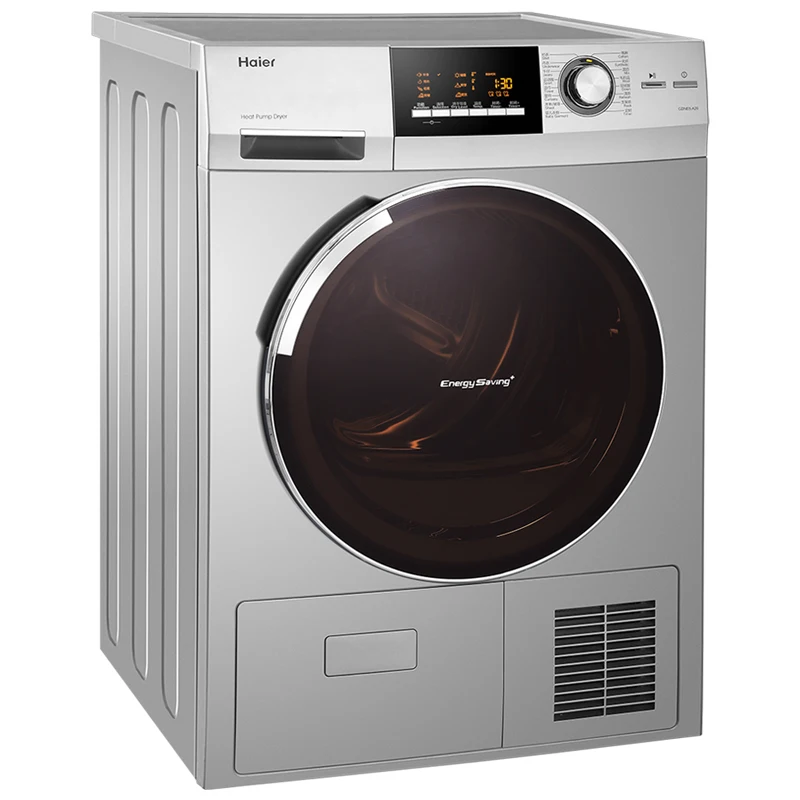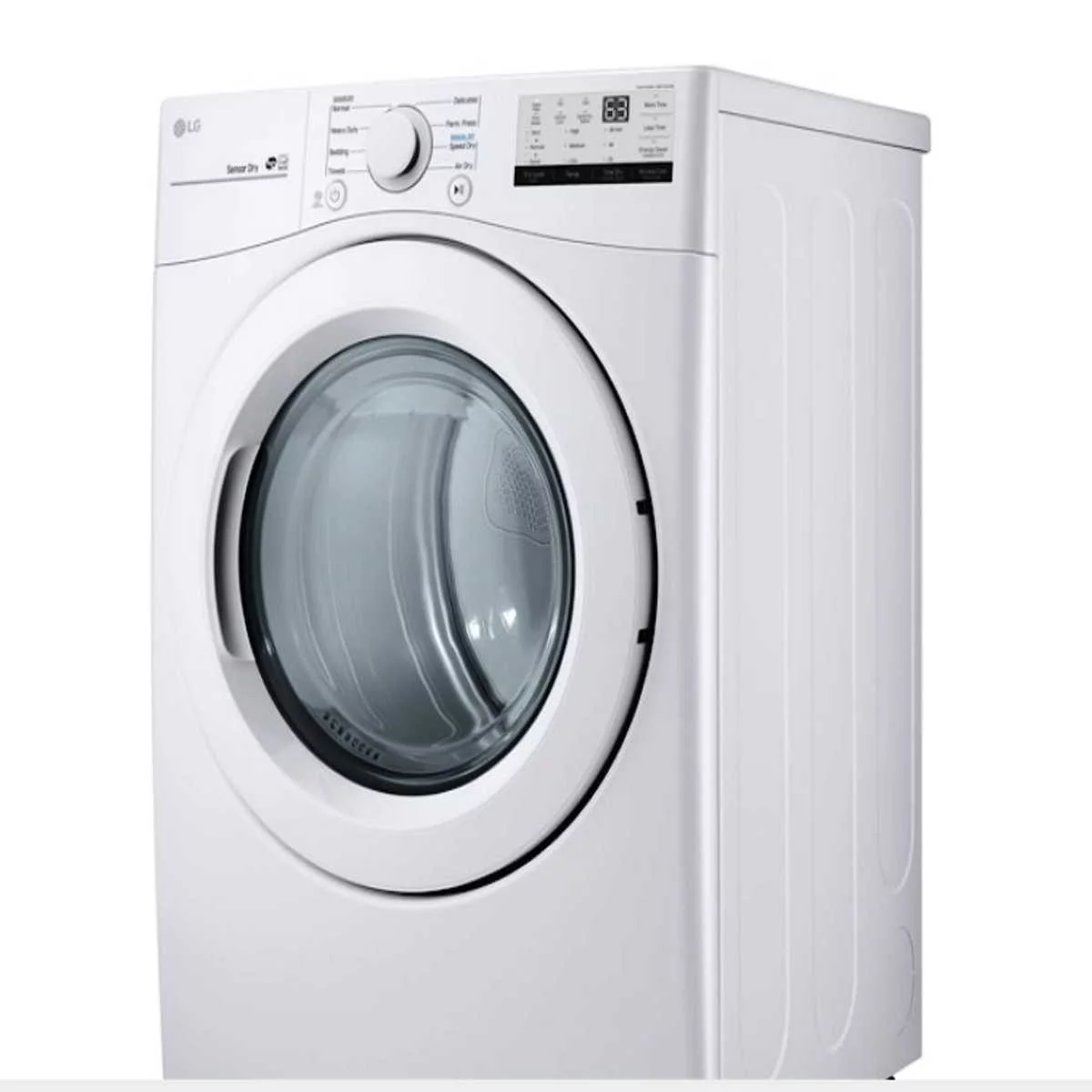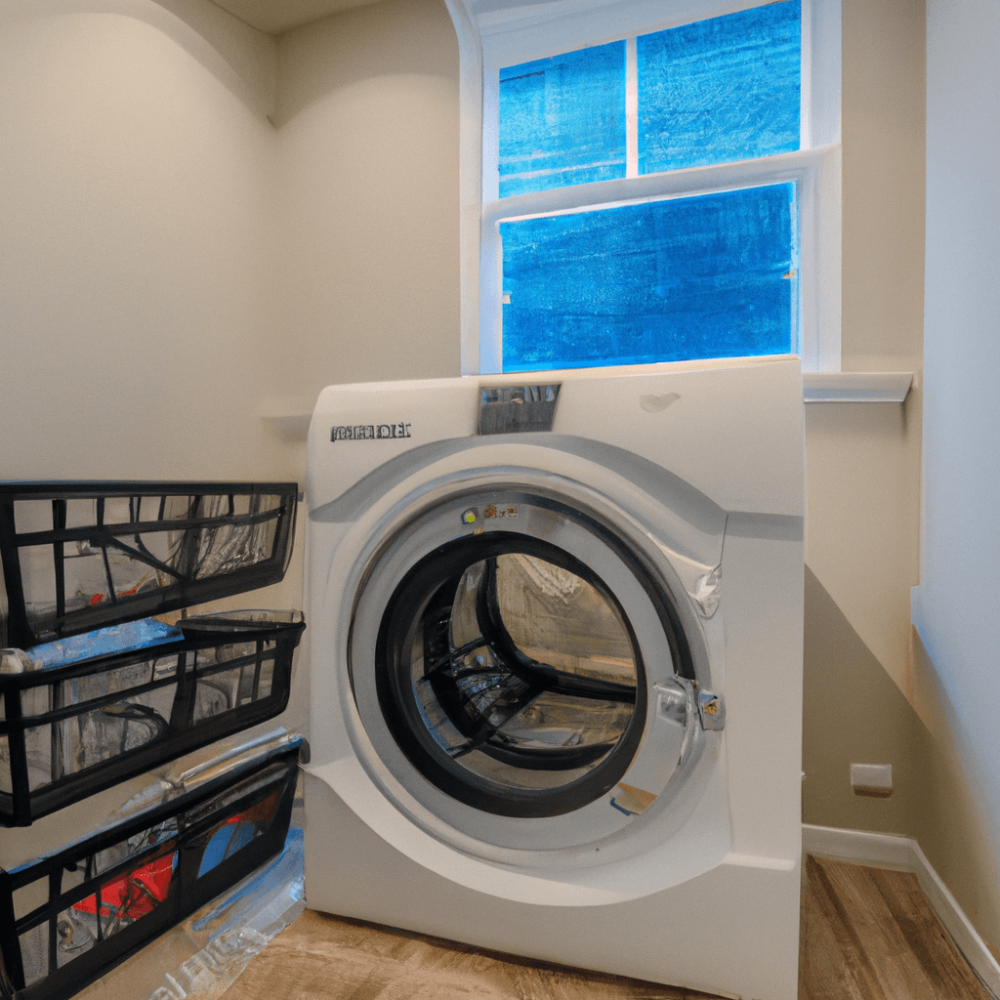Common Reasons Why a Dryer Won’t Dry Clothes Fully
A dryer not drying clothes all the way can be frustrating. There are several typical reasons for this issue. First, check the basics. Make sure the dryer is properly plugged in and that the circuit breaker hasn’t tripped. If all is well there, then we need to dive deeper.

Blocked Venting System
A common culprit is a blocked venting system. Lint and debris can accumulate over time, restricting airflow. This prevents moisture from escaping and thus clothes remain damp.
Faulty Heating Element
Another possible reason is a faulty heating element. If the element isn’t working, the dryer won’t reach the temperature needed to dry the clothes completely.
Malfunctioning Thermostat
A malfunctioning thermostat is also a common problem. It might not be regulating the temperature accurately, leading to clothes that are not properly dried.
Overloaded Drum
Overloading the drum can also lead to clothes not drying fully. There must be room for air to circulate around the clothes.
Worn-out Drum Seals
Finally, worn-out drum seals can hamper dryer performance. If the seals are failing, air may leak out, and the dryer will take longer to work.
Understanding these issues can guide you to the next steps: either a DIY fix or calling a professional. Remember, regular maintenance can prevent many of these problems.
How to Check and Clean the Dryer Vent
Ensuring your dryer vent is clear of lint and debris is vital for performance. Start by locating the vent. Usually, you can find it at the back of the dryer leading to the outside. Pull the dryer away from the wall gently to reach it. Disconnect the vent from the dryer and examine it for blockages.
To clean the vent, use a vacuum with a hose attachment. Carefully insert the hose into the vent. Vacuum out the lint, ensuring you reach as far into the vent as you can. For any stubborn debris, a vent brush can help. It’s a long, flexible brush designed to clean dryer vents. Push it through the vent, turning it to gather up lint.
After cleaning, reconnect the vent to the dryer. Ensure it fits snugly and that there are no kinks. It’s also a good time to inspect the vent for any damage. If you find holes or tears, you should replace it to prevent further issues.
Finally, go outside and check the exterior vent flap. It should open when the dryer is on, indicating good airflow. Remove any debris you find here as well.
For the best performance, clean your dryer vent every year. This will help keep your dryer drying clothes all the way, and it also lowers the risk of fire.
Inspecting the Heating Element for Issues
When your dryer is not drying clothes all the way, the heating element may be to blame. It’s a critical component that provides the heat needed to dry your laundry. If it malfunctions, your clothes might come out damp even after a full cycle.
To inspect the heating element, first, ensure the dryer is unplugged to avoid any electrical hazards. Access the heating element by removing the back panel of the dryer with a screwdriver. Look for signs of damage, such as breaks or burns, on the coils of the heating element. A continuity test with a multimeter will help you determine if the heating element has a break in the circuit.
If you find damage or the multimeter indicates no continuity, it’s time to replace the heating element. Replacement parts are generally available from the manufacturer or local appliance parts stores. For those comfortable with DIY repairs, follow the dryer’s manual closely to install the new element. If you’re not sure, seek professional help to ensure the job is done safely and correctly.
During inspection, also check nearby components like the high-limit thermostat and thermal cut-off fuse. These parts work in conjunction with the heating element and can directly impact its function. If these components are faulty, they may prevent the heating element from working at all. They are often sold as a kit with the heating element and can be replaced at the same time.
Regular inspection and maintenance of the heating element and related components can prevent issues and extend the dryer’s life.
 Tips for Testing the Thermostat and Thermal Fuse
Tips for Testing the Thermostat and Thermal Fuse
If your dryer is not drying clothes all the way, the thermostat or thermal fuse may be faulty. Testing these components can help identify the problem. Before you start, unplug your dryer to ensure safety.
Testing the Thermostat
The thermostat regulates the temperature in your dryer. To test it, locate the thermostat which is usually found on the back panel. Use a multimeter to check for continuity. If the multimeter reading does not change, the thermostat may need replacing.
Testing the Thermal Fuse
The thermal fuse is a safety device that prevents the dryer from overheating. Find it on the blower housing or at the dryer’s heat source. Again, use a multimeter to check for continuity. Lack of continuity suggests a blown fuse, which requires replacement.
Both the thermostat and thermal fuse are critical for safe and effective dryer operation. If tests show any issues, replace these parts to restore your dryer. Remember to consult your dryer’s manual for details on locating and handling these components. Or, if in doubt, call a professional for assistance.
The Role of the Lint Filter in Dryer Performance
A clean lint filter is key for a dryer to work well. As you use your dryer, lint from clothes builds up in the filter. If it’s full, air can’t flow properly. This poor airflow makes the dryer take more time to dry clothes. It can even become a fire hazard if not managed.
Check the lint filter every time you use the dryer. Pull out the filter and remove the lint by hand. You can also use a vacuum to clear away any remaining debris. Make sure you clean the area where the filter sits as well.
Sometimes, a filter might appear clean but still cause issues. This can happen if you use fabric softener sheets. They can leave a residue that blocks fine mesh. To test this, run water over the filter. If water pools on top rather than draining through, you need to clean it. Scrub the filter gently with a nylon brush and soap. Then rinse and dry it thoroughly before putting it back.
If your filter is torn or damaged, replace it. A damaged filter won’t trap lint properly. This can lead to more serious problems. It’s a simple step that can make a big difference.
By keeping the lint filter clean, you help your dryer run efficiently. This can save energy and prevent unnecessary wear and tear on your machine. Clean filters contribute to clothes drying fully. Without lint blockage, your dryer can perform at its best.
Assessing the Dryer Drum Seals and Bearing
A key factor in a dryer’s ability to dry clothes completely is the condition of its drum seals and bearing. Over time, wear and tear on these parts can result in poor dryer performance. Here’s how to assess if these components may be the reason your dryer is not drying clothes all the way.
First, examine the drum seals. These seals are located around the edges of the drum to keep hot air within the drum. If you see signs of damage such as fraying or gaps, it’s time to replace them. Leaky drum seals can let warm air escape, which means longer dry times for clothes.
Next, check the drum bearing. The bearing supports the back of the dryer drum. If it’s failing, you might hear a squeaking or grinding noise when the dryer is on. This indicates the drum is not turning smoothly and can affect the drying process.
To inspect the bearing, you will need to access the back of the drum. This usually requires removing a panel on the back of your dryer. If you see wear or damage, or if the bearing is too loose, consider replacing it.
Repairing or replacing drum seals and bearings are more advanced tasks. If you’re not comfortable with such repairs, it’s wise to consult a professional. They have the tools and expertise needed to do the job safely and correctly.
Remember, maintaining these parts can improve your dryer’s efficiency and extend its life. It also ensures that your clothes come out dry and ready to wear.
The Impact of Overloading on Dryer Efficiency
Overloading your dryer can severely affect its efficiency. Here’s why drying clothes all the way is harder with a full drum:
- Air Circulation is Key: Dryers need space for hot air to flow freely. Too many clothes mean less room for air, which is vital for moisture removal.
- Increased Drying Time: When overloaded, clothes bunch up and restrict airflow. This leads to longer drying cycles and may even require extra drying time.
- Uneven Drying: With overloading, some clothes dry while others stay damp. Packed clothes don’t tumble properly, preventing even drying.
- Excessive Strain on the Dryer: Stuffing the dryer puts extra stress on the motor and other moving parts. Over time, this can cause significant wear and damage, potentially leading to costly repairs or replacement.
To avoid overloading, follow these tips:
- Check the Drum Size: Know your dryer’s capacity and don’t fill it beyond that. Most dryers have a load capacity guide.
- Dry Similar Items Together: Keep heavy towels separate from lightweight garments to ensure they dry at the same rate.
- Use Multiple Cycles for Large Loads: If you have a lot to dry, split it into smaller loads. This may seem time-consuming but actually saves time by drying more effectively.
By being mindful of the load size, you ensure your dryer works as intended, saving you both time and energy, and helping your clothes dry properly. Avoiding overloading is a simple yet crucial step in troubleshooting a dryer not drying clothes all the way.
 When to Call a Professional for Dryer Repair
When to Call a Professional for Dryer Repair
When dealing with a dryer not drying clothes all the way, you might reach a point where professional help is needed. Understanding when to call in an expert can save you time and ensure the safety and efficiency of your dryer. Here are some situations when it’s best to call a professional:
- Complex Repairs: If you’re not comfortable with tasks like replacing the heating element or drum bearings, it’s wise to seek professional assistance.
- Electrical Issues: When your inspection suggests electrical problems, it’s safest to let a qualified technician handle it.
- Persistent Problems: If you’ve tried the troubleshooting steps and your dryer still isn’t drying clothes all the way, there could be underlying issues that require a specialist’s diagnosis.
- Warranty Concerns: If your dryer is still under warranty, attempting DIY repairs might void it. Check your warranty terms and contact the manufacturer or a licensed repair service.
- Lack of Tools: Some dryer repairs need special tools. If you don’t have these tools, it’s time to call a pro.
- Time Constraints: If you’re short on time, a professional can fix the problem quickly and efficiently.
Remember, safety comes first. If you’re not completely confident in your ability to safely repair your dryer, don’t hesitate to call for professional help. By doing so, you ensure your dryer is repaired correctly and prevent potential problems in the future.
